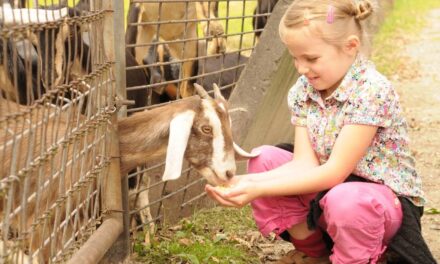Five hundred years ago, being a midwife or an unmarried cat lady could have put you at risk of torture and being burned at the stake for witchcraft. It wasn’t just in Pendle or Salem, there were witchy goings-on in Sussex too…
Samhain
According to folklore, Halloween is the time of year when the dead can slip quietly into the mortal world. Based on the Celtic festival of Samhain, the events of 31 October are both a celebration of the harvest and a moment to usher in the dark half of the year.
Fearful of bad spirits who might be prowling around during the long dark nights, people kept themselves safe by lighting bonfires to ward them off.
Witches were disguised as ordinary women
Unlike other ‘bad spirits’, witches were believed to go about their business disguised as ordinary women.
Midwives were a particular target. They understood menstruation and contraception, assisted with birth and performed abortions. Important members of the community from earliest times, they had the power of life and death in their hands.
‘Cunning folk’
Those accused might also have been so-called ‘cunning folk’ who could whip up a tasty herbal pick-me-up for somebody who was ailing. Although they were most likely to be outspoken, unmarried women who didn’t fit in, around one in four were men.
In rural communities, witches were accused of causing the crops to fail, for bad weather, for illness and death, and anything else that was going wrong. Pointing the finger at a ‘witch’ was also a useful way for a neighbour to settle a score. For some, pretending to be bewitched was a means for making money.
To evade detection, witches supposedly transformed themselves into animals, such as cats and hares. Despite this, witches were as likely to be respected as they were feared.
Heresy
A turning point came in 1484, when Pope Innocent V111 decided that witches were the puppets of Satan and witchcraft was heresy. Witchcraft became punishable by death.
Shortly after, a former monk, Heinrich Kramer, published detailed instructions on how to identify, torture, prosecute and punish a witch.
His book, ‘Malleus Maleficarum’, also known as the ‘Hammer of Witches’, is thought to have contributed to the burning or hanging of up to 200,000 people throughout Western Europe.
Kramer described how women were inclined to practice witchcraft because they were weaker in faith and more lustful than men. He accused them of infanticide, cannibalism and stealing men’s ‘flutes’.
Witches’ mark
Witches could be identified by a defining mark; a third nipple or more commonly a lump, bump, wart or mole.
He detailed how to get to the truth by torture, including the infamous ‘ordeal by water’. A suspected witch was thrown into water; if she floated, she was innocent and if she sunk (and probably drowned) she was guilty. Thumb screws, tongue tearers, toe breakers, and foot boiling were all employed in the interrogation of the accused.
Sussex witches
In Sussex, there are no records of anybody being burned at the stake and just one report of a hanging. Margaret Cooper of Kerdeforde was charged at East Grinstead for bewitching Henry Stoner, William Fowler and Elizabeth Fowler, all of whom died a few days after.
Margaret admitted her guilt and was sentenced to hang.
This is in stark contrast to Essex, where there were 473 charges of witchcraft and 82 executions during the same period.
Locals charged
Although there was little appetite for execution in the county, there were charges. Margaret Smythe was indicted at Lewes Assizes with causing two toads to suckle a red cow so that it died.
In 1607, Susanna Swapper of Rye, a healer of physical and spiritual ailments, was accused but escaped punishment.
Alice Casselowe, spinster of Mayfield, was accused of killing an ox and three pigs by witchcraft in 1577 and sent to gaol.
A woman, accused of bringing spirits down upon Joseph Cruttenden and his wife and burning their house, was eventually cleared after a disgruntled serving girl was discovered.
In 1645 of two women, Martha Bruff and Ann Howsell, were subjected to ordeal by water as suspected witches.
Persecutions continued in the UK until 1735, when the British Witchcraft Act made it a crime for a person to claim that any human being had magical powers or was guilty of practising witchcraft.
Sussex sites
If you want to get a feel for local witchery, you could take a trip to Chanctonbury Ring, a prehistoric hill fort on the South Downs.
The site has long been associated with witchcraft and supernatural activity. Local legend has it that witches gathered there to perform rituals.
Even today, the site is a place of curiosity and is said to be haunted by the spirits.




